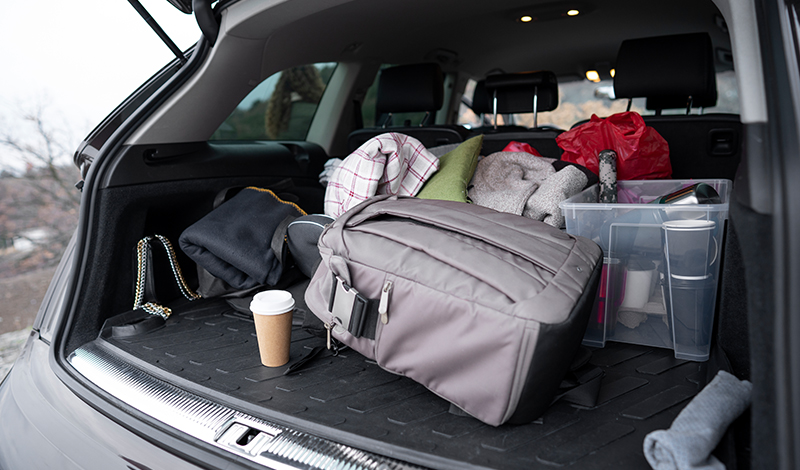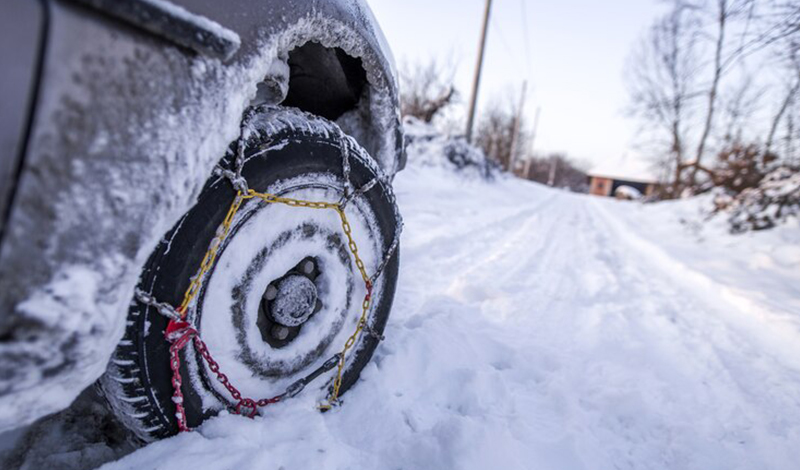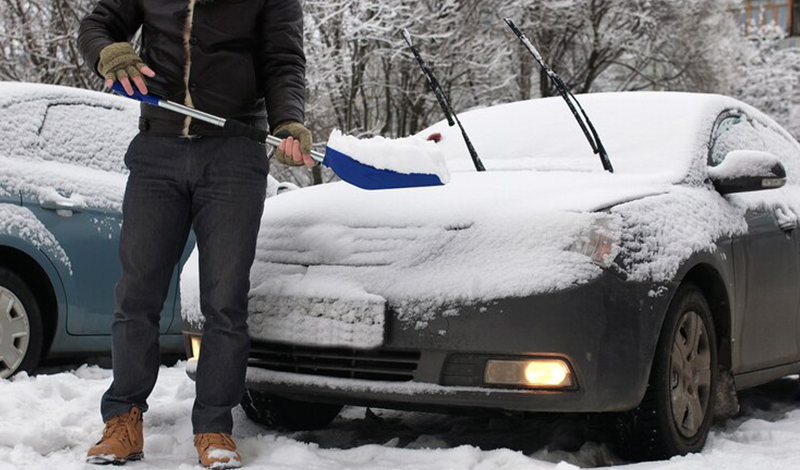As the days shorten and temperatures drop, winter’s approach in the United Kingdom brings its own set of challenges for motorists. Ensuring that your vehicle is prepared for the colder months is crucial, not just for your safety but also for the car’s longevity. This article provides a comprehensive guide on preparing your car for the British winter.
Tyres: Tread Carefully

Your vehicle’s tyres stand as the first line of defence when you confront icy roads and winter weather. In the UK, winter brings forth not just plummeting temperatures, but also unpredictable conditions like slush, snow, and rain. For this reason, specialised winter tyres, which offer enhanced grip and stability, are strongly recommended. In addition, always scrutinize the depth of the tread on your tyres. Aim for a minimum of 3mm; anything less compromises your vehicle’s traction and could put you at risk.
Cold air can also lead to lower tyre pressure. An underinflated tyre affects your vehicle’s fuel efficiency, and more importantly, its ability to maintain solid contact with the road. Therefore, consistent pressure checks throughout winter are essential. Many modern cars offer built-in tyre pressure monitoring systems, but having a manual gauge as a backup is a good practice.
Don’t forget to inspect the general condition of each tyre as well. Look for signs of uneven wear, punctures, or any other damage that could lead to bigger issues. Addressing these factors promptly ensures that your vehicle remains as safe as possible during winter, allowing you to navigate Britain’s challenging seasonal roads with greater assurance and less stress.
Battery: Charge Ahead for Winter Readiness

In the United Kingdom, winter cold can wreak havoc on car batteries, draining their charge more quickly than in milder seasons. Given the battery’s central role in starting your vehicle and powering essential functions, taking steps to ensure its health is crucial. A full charge should be your baseline; without it, even the most robust battery can fail you in cold weather.
Regular checks for corrosion around battery terminals help detect early signs of wear. Signs like a sluggish start should not be ignored; they indicate the battery might be nearing the end of its lifespan, which is generally around four years. If your battery falls within that age range, consider a preemptive replacement to avoid any inconvenient breakdowns during the winter months.
Adding to this, keeping a set of quality jumper cables in your vehicle can save you from a lot of distress. In the unfortunate event of a breakdown, the ability to jump-start your battery can be the difference between a short delay and a ruined day. But remember, jumper cables are a stopgap solution and not a substitute for proper battery maintenance.
In summary, winter readiness for your car isn’t complete without focusing on the battery. By keeping it fully charged, monitoring for signs of wear, and having emergency backup like jumper cables, you’re setting the stage for a hassle-free winter driving experience.
Fluids: Ensuring Consistent Flow in Frosty Conditions

In cold temperatures, your car’s fluid dynamics can dramatically shift. Regular inspection of these vital liquids ensures smooth operation of various mechanical parts. Opt for winter-grade engine oil, formulated to flow effectively even at low temperatures. This action will not only the engine’s efficiency but also its overall health. Monitor the engine oil’s level and consistency regularly, replenishing or replacing as needed.
Antifreeze plays a critical role in regulating your car’s temperature, particularly in the biting cold. Verify the level and concentration of the coolant, balancing it with distilled water if required. Neglecting antifreeze can result in engine overheating, even during winter months.
Windshield washer fluid may seem inconsequential, but it gains prominence when icy roads kick up slush onto your windshield, compromising visibility. A winter-specific washer fluid formula prevents freezing on contact with the windshield. Always keep this fluid at optimal levels, and consider keeping a spare bottle in your car.
Transmission fluid, often overlooked, also warrants your attention. Low or deteriorated transmission fluid can hamper your vehicle’s gear-shifting capabilities, leading to performance issues. Opt for transmission fluid that is specifically designed to work in colder climates.
Regularly checking these fluids and keeping them at their optimal levels will significantly improve your winter driving experience. Each fluid serves a distinct purpose, and their collective maintenance can spell the difference between a worry-free winter drive and an untimely breakdown.
Heating System: Ensuring Warmth and Clear Vision

Before winter’s chill truly sets in, verifying the optimal performance of your car’s heating system is imperative. A functional heater not only enhances comfort but is also critical for maintaining clear visibility, thereby directly influencing your safety. Start by examining the heating vents: do they emit warm air promptly upon ignition? If not, a coolant issue or a malfunctioning heater core could be the culprits. Get these components inspected and rectified as needed.
Next, scrutinize the defroster, particularly the one for the windshield. A defroster in top condition will swiftly remove frost and fog, ensuring that your view remains unobstructed. If you notice slow defogging or hear unusual noises, it’s time for a system check-up.
Your wiper blades deserve attention too. Worn blades can result in streaking, further reducing visibility during snowfall or sleet. Switching to winter-specific wiper blades that resist icing can make a substantial difference.
Air filters also require your focus. A clogged air filter may hamper not just the heater’s efficiency but also affect air quality inside the car. For optimal function and health, consider replacing the air filter before winter starts.
By assiduously attending to these elements—vent heating, defrosting, wiper blades, and air filters—you ensure that your car’s heating system is winter-ready. In doing so, you take a significant step towards safe and comfortable winter driving in the UK.
Emergency Kit: Prepare for the Worst

In the unpredictable British winter, it’s not just savvy but essential to have an emergency kit in your car. This kit serves as your lifeline should you encounter any unexpected incidents or delays while driving in cold conditions.
Start by including a warm blanket; it’s invaluable in keeping you cosy should your heating system fail. Add non-perishable food items like energy bars and bottled water to sustain you if you’re stranded. These provisions don’t just offer sustenance but can be crucial for maintaining energy levels in stressful situations.
Illumination is another concern. A durable, battery-powered torch will not only help you see in the dark but can also serve to signal for help. Pair it with extra batteries to ensure it remains functional when you need it most.
For medical exigencies, include a first-aid kit equipped with essentials such as bandages, antiseptics, and pain relievers. A small, portable phone charger can be a real lifesaver, especially if you find yourself in a remote area with a low battery.
Visibility and safety gear are equally important. Consider adding a high-visibility reflective vest, which enhances your visibility to other drivers if you have to leave your vehicle. Additionally, a set of sturdy gloves can protect your hands while changing a tyre or performing minor repairs.
By packing these essentials in your emergency kit, you’re not just preparing for contingencies; you’re actively contributing to your safety and well-being during the challenging winter months. This kit is not an option but a necessity for every British motorist keen on mitigating winter-related risks.
Snow and Ice Gear: Essential Tools for Winter Resilience

While snow chains might not be a daily necessity throughout the UK, they certainly merit consideration as part of your winter car toolkit. These traction-enhancing devices can be invaluable if you find yourself navigating snow-laden or icy roads. Bear in mind that the law around snow chains varies; it’s best to check local regulations beforehand.
Ice scrapers and snow brushes are not just optional accessories but crucial tools for maintaining visibility. Leaving your vehicle’s windows, mirrors, or lights covered in frost, ice, or snow isn’t just dangerous—it could be illegal. Ensure that your ice scraper is sturdy and effective, as you don’t want to waste time on a cold morning dealing with subpar tools.
Snow shovels, compact and collapsible, can prove incredibly useful if your car is stuck. Storing one in your boot alongside a bag of cat litter or sand—materials that can provide traction under your tyres—can make the difference between hours of waiting for rescue and freeing your vehicle quickly.
Reflective markers or hazard triangles can be placed around your vehicle if you find yourself immobilized due to snow or ice. This makes your car more visible to other drivers, reducing the risk of collision during low-visibility conditions.
In summary, these snow and ice gear items aren’t merely convenient—they’re vital for both safety and legal compliance. Equipping your car adequately can help you handle winter’s unpredictability with confidence.
Driving Tips: Navigating Icy and Snow-Covered Roads in Winter

During winter, the UK’s roads present challenges that demand heightened awareness and meticulous driving. First and foremost, slowing down is essential. Reduced speed minimizes the risk of skidding, providing you with more reaction time to navigate treacherous stretches of ice or snow. Maintain a safe distance from the vehicle ahead; increasing the gap allows ample time for braking without collision risks.
Braking demands particular caution. Rather than slamming on the brakes, which can induce skidding, apply them gently. If you’re driving a car without anti-lock brakes, pump the brakes lightly to prevent wheel lockup. Familiarize yourself with how your vehicle behaves under slippery conditions; a controlled environment, like an empty parking lot, is ideal for this practice. Learning your car’s winter-specific capabilities can drastically improve your confidence and safety while driving.
Sharp turns are another hazard. As much as possible, the approach turns slowly and cautiously to avoid losing control. If your car starts to skid, steer in the direction you want to go. For example, if the rear end is skidding to the left, steer left. If it’s skidding to the right, steer right.
Visibility often decreases in winter due to fog or snowfall, making good lighting crucial. Ensure that all lights, including fog and hazard lights, are functioning optimally. Replace any dim bulbs and consider upgrading to LED for better illumination.
In sum, winter driving in the UK necessitates a blend of proactive preparation and responsive execution. By slowing down, practising careful braking, and knowing how your vehicle handles icy conditions, you enhance not just your safety but also that of others on the road.
Conclusion
Navigating the British winter requires a well-prepared vehicle and a careful approach to driving. By taking these preventative measures, you’ll not only ensure your safety but also extend the lifespan of your car. Be proactive, and don’t let winter catch you—or your vehicle—off guard.

